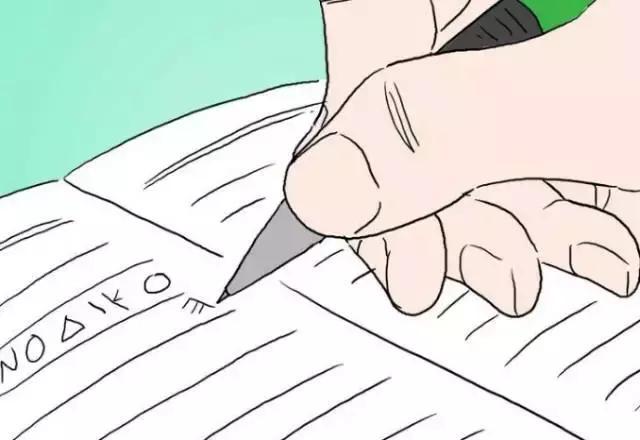篇一:ie是什么意思英语
关于ie字母组合的句子英语
TheVersatile"ie"LetterCombination:UnveilingItsIntricacies.
AmidstthemyriadlettercombinationsthatweavethetapestryoftheEnglishlanguage,the"ie"duostandsasaversatileandoftenenigmaticentity.Itsenigmaticnaturearisesfromitsmultifacetedpronunciation,whereitoscillatesbetweenthelong"ee"sound,asin"believe,"andthediphthongal"eye"sound,asin"lie."Thisdualitynecessitatesanuancedunderstandingoftherulesgoverningitsusage,whichthiscomprehensiveexplorationaimstoelucidate.
DelvingintothePronunciationDivide.
Thecruxofthe"ie"conundrumliesinitsdualisticpronunciation.Whilethegeneralruledictatesthat"ie"producesthelong"ee"soundwhenitprecedesaconsonantfollowedbyavowel(e.g.,"chief,""piece"),thereare
notableexceptionstothisnorm.Inscenarioswhere"ie"isfollowedbyaconsonantattheword"sendorbeforeanotherconsonant(e.g.,"die,""friend"),ittypicallyassumesthediphthongal"eye"sound.
Navigatingthe"ie"Maze:AGuidetoUsage.
Tonavigatethecomplexitiesof"ie"usage,acloserexaminationofitsvariouscontextsiswarranted.
1.Long"ee"Pronunciation:
When"ie"precedesaconsonantfollowedbyavowel,itgenerallyproducesthelong"ee"sound.Forinstance,inwordslike"believe,""field,"and"grief,"the"ie"combinationexudesthelong"ee"pronunciation.
2.Diphthongal"Eye"Pronunciation:
Incaseswhere"ie"isfollowedbyaconsonantattheword"sendorbeforeanotherconsonant,ittypicallyassumesthediphthongal"eye"sound.Wordslike"die,"
"lie,"and"friend"exemplifythispronunciationpattern.
3.ExceptionstotheRule:
Amidsttheprevailingrules,thereareahandfulofexceptionsthatdefythe"ie"pronunciationnorms.Theseexceptionalwordsinclude"science,""species,"and"sufficient,"where"ie"consistentlyproducesthelong"ee"sounddespitenotadheringtothestandardconsonant-vowel-consonantpattern.
Conversely,inwordslike"leisure"and"weird,"the"ie"combinationdeviatesfromthediphthongal"eye"soundandinsteadproducesthe"zh"sound,furtherexpandingthepronunciationspectrumof"ie."
4.The"ie"and"ei"Quandary:
TheEnglishlanguagepresentsanotherlayerofcomplexitywiththeexistenceofthe"ei"lettercombination,whichoftenmirrorsthe"ie"pronunciationpatterns.Inwordslike"receive"and"conceit,""ei"
assumesthelong"ee"sound,whileinotherslike"eight"and"neighbor,"itadoptsthediphthongal"eye"sound.
GraspingtheNuances:ACloserLookatPronunciationPatterns.
Tofullycomprehendtheintricaciesof"ie"pronunciation,adeeperdelveintospecificpatternsisessential.
1.Long"ee"Pattern:
Typicallyoccurswhen"ie"precedesaconsonantfollowedbyavowel,asin"belief,""field,"and"grief."
Exceptionsincludewordslike"science,""species,"and"sufficient,"where"ie"retainsthelong"ee"sounddespitenotconformingtothestandardpattern.
2.Diphthongal"Eye"Pattern:
Generallyemergeswhen"ie"isfollowedbyaconsonant
attheword"sendorbeforeanotherconsonant,asin"die,""lie,"and"friend."
Notableexceptionsincludewordslike"leisure"and"weird,"where"ie"producesthe"zh"sound.
3."ie"vs."ei"Pronunciation:
Whileboth"ie"and"ei"oftenexhibitsimilarpronunciationpatterns,therearesubtledistinctions.
"ie"typicallyproducesthelong"ee"soundwhenprecedingaconsonantfollowedbyavowel,while"ei"tendstoassumethelong"ee"soundinothercontexts,suchas"receive"and"conceit."
However,"ei"canalsoadoptthediphthongal"eye"sound,asseeninwordslike"eight"and"neighbor."
UnveilingtheOriginsofthe"ie"Conundrum.
Tofullygraspthecomplexitiesof"ie"usage,delving
intoitshistoricalevolutioniscrucial.TherootsofthisenigmaticlettercombinationcanbetracedbacktotheNormanConquestofEnglandin1066.Priortothisevent,OldEnglishemployedthelettercombination"ie"torepresentthelong"ee"soundinwordslike"lief"and"liefest."However,withtheinfluxofNormanFrench,the"ie"combinationbegantobeusedinterchangeablywith"ei,"apracticethatpersiststothisday.Thislinguisticconvergencecontributedtotheambiguitysurrounding"ie"pronunciation,aswordswithsimilarspellingscouldhavedivergentpronunciations.
Conclusion:Embracingthe"ie"Enigma.
The"ie"lettercombinationstandsasatestamenttothedynamicnatureoftheEnglishlanguage,wherehistoricalinfluencesandevolvingusagehaveshapeditsmultifacetedpronunciation.Whileitsenigmaticnaturemaypresentchallengestolearners,understandingtheunderlyingrulesandembracingitsexceptionsempowerindividualstonavigatethecomplexitiesof"ie"usagewithconfidence.Bydelvingintotheintricaciesofthis
versatilelettercombination,wenotonlyenhanceourlinguisticproficiencybutalsogainadeeperappreciationfortherichtapestryoftheEnglishlanguage.
篇二:ie是什么意思英语
ie组合的英语单词20个
EnglishAnswer:
1."ie"isacommonlettercombinationinEnglishthatrepresentsthe"longe"sound,asin"piece"and"field."
2."ie"isalsousedinsomewordstorepresentthe"shorte"sound,asin"friend"and"pretty."
3.Themostcommonruleforusing"ie"is:
>Use"ie"afteraconsonantandbeforeavowel,asin"believe"and"ancient."
4.However,therearesomeexceptionstothisrule,suchas:
>After"c,"alwaysuse"ei,"asin"receive"and"conceit."
>After"q,"alwaysuse"ie,"asin"quiet"and"acquire."
5.Insomewords,"ie"isusedtocreateadiphthong,oracombinationoftwovowelsounds,asin"tie"and"pie."
6.Herearesomecommonwordsthatusethe"ie"lettercombination:
>believe.
>field.
>piece.
>friend.
>pretty.
>ancient.
>receive.
>conceit.
>quiet.
>acquire.
>tie.
>pie.
>die.
>lie.
>tried.
>fried.
7.The"ie"lettercombinationcanbeabittrickytolearn,butitisanimportantpartofEnglishspelling.
8.Withpractice,youcanlearntouse"ie"correctlyandavoidcommonspellingerrors.
9.Herearesometipsforusing"ie"correctly:
>Remembertherule:"ie"afteraconsonantandbeforeavowel.
>Learntheexceptionstotherule,suchas"c"and"q."
>Practiceusing"ie"inyourwriting.
10.Withalittleeffort,youcanmastertheuseof"ie"andimproveyourEnglishspelling.
11.The"ie"lettercombinationisalsousedinsomewordstorepresentthe"longi"sound,asin"tie"and"kite."
12.Inthesewords,the"ie"combinationisfollowedby
aconsonant,whichpreventsthe"e"frombeingpronouncedasaseparatesyllable.
13.Forexample,theword"tie"ispronouncedwithonesyllable,/ta?/,ratherthantwosyllables,/ti-e/.
14.The"ie"lettercombinationcanalsobeusedtocreateadiphthong,oracombinationoftwovowelsounds,asintheword"pie."
15.Inthisword,the"ie"combinationispronounced/a?/,whichisacombinationofthe/a/soundin"cat"andthe/i/soundin"sit."
16.The"ie"lettercombinationisaversatileonethatcanbeusedtorepresentavarietyofdifferentsoundsinEnglish.
17.Itisimportanttobeawareofthedifferentwaysthat"ie"canbepronouncedinordertouseitcorrectlyinyourwritingandspeaking.
18.Herearesomeadditionalexamplesofwordsthatusethe"ie"lettercombination:
>vie.
>hie.
>siege.
>grief.
>chief.
>field.
>yield.
>shield.
>wield.
19.Asyoucansee,the"ie"lettercombinationcanbe
foundinawidevarietyofwords,bothcommonanduncommon.
20.Byunderstandingthedifferentwaysthat"ie"canbepronounced,youcanuseitcorrectlyinyourwritingandspeaking.
中文回答:
1."ie"是英语中一个常见的字母组合,表示"长元音e",如
"piece"和"field"中的"e"。
2."ie"也用于一些单词中表示"短元音e",如"friend"和
"pretty"中的"e"。
3.使用"ie"最常见的规则是:
>在辅音后面和元音前面使用"ie",如"believe"和
"ancient"。
4.但是,有一些例外,例如:
>在"c"后面,始终使用"ei",如"receive"和
"conceit"。
>在"q"后面,始终使用"ie",如"quiet"和"acquire"。
5.在一些单词中,"ie"用于创造双元音,即两个元音组合,如"tie"和"pie"。
6.以下是一些使用"ie"字母组合的常见单词:
>believe.
>field.
>piece.
>friend.
>pretty.
>ancient.
>receive.
>conceit.
>quiet.
>acquire.
>tie.
>pie.
>die.
>lie.
>tried.
>fried.
7."ie"部分。
字母组合可能有点难学,但它是英语拼写的重要组成
8.通过练习,你可以学会正确使用"ie"并避免常见的拼写错误。
9.以下是正确使用"ie"的一些技巧:
>记住所讲的规则,"ie"在辅音后面和元音前面。
>学习规则的例外,如"c"和"q"。
>在你的写作中练习使用"ie"。
10.只要努力一点,你就可以掌握使用"ie"并提高你的英语拼写能力。
11."ie"字母组合也用于一些单词中表示"长元音i",如
"tie"和"kite"中的"i"。
12.在这些单词中,"ie"组合后面跟着一个辅音,防止"e"被发音成一个单独的音节。
13.例如,单词"tie"被发音为一个音节/ta?/,而不是两个音节/ti-e/。
14."ie"字母组合也可以用于创建一个双元音,即两个元音组合,如单词"pie"。
15.在这个单词中,"ie"组合被发音为/a?/,这是"cat"中的/a/和"sit"中的/i/的组合。
16."ie"字母组合是一个多功能的组合,可以用来表示英语中各种不同的声音。
17.了解"ie"可以在不同的单词中发音的方式非常重要,这样才能在写作和说话中正确使用它。
18.以下是一些使用"ie"字母组合的附加示例:
>vie.
>hie.
>siege.
>grief.
>chief.
>field.
>yield.
>shield.
>wield.
19.正如你所看到的,"ie"字母组合可以在各种单词中找到,包括常见单词和非常用的单词。
20.通过了解"ie"可以发出的不同音,你可以在写作和说话中正确地使用它。
篇三:ie是什么意思英语
ie是什么国家
IE是爱尔兰的缩写。
“IE”是“Ireland”的缩写,意思是“爱尔兰”。
爱尔兰共和国(爱尔兰语:Poblachtnahéireann;英语:RepublicofIreland),简称“爱尔兰”(Ireland),是一个西欧的议会共和制国家,位于欧洲西部的爱尔兰岛中南部。
篇四:ie是什么意思英语篇五:ie是什么意思英语
所有英语单词词性缩写
prep=介系词;前置词,preposition的缩写pron=代名词,pronoun的缩写n=名词,noun的缩写
v=动词,兼指及物动词和不及物动词,verb的缩写conj=连接词,conjunction的缩写s=主词
sc=主词补语o=受词
oc=受词补语
vi=不及物动词,intransitiveverb的缩写vt=及物动词,transitiveverb的缩写aux.v=助动词,auxiliary的缩写a=形容词,adjective的缩写ad=副词,adverb的缩写art=冠词,article的缩写num=数词,numeral的缩写int=感叹词,interjection的缩写
u=不可数名词,uncountablenoun的缩写c=可数名词,countablenoun的缩写pl=复数,plural的缩写
语气词int.缩写词abbr.abbrabbreviation(略)略语adj,adjjadjective(s)(形)形容词adv,advvadverb(s)(副)副词
advpartadverbialparticle(副接)副词接语auxauxiliary(助)助动词
cncountablenoun(可数)可数名词conjconjunction(连)连接
defartdefinitearticle(定冠)定冠词egforexample(例如)例如espespecially(尤指)尤指etcandtheothers(等)等等iewhichistosay(意即)意即
indefartindefinitearticle(不定冠词)不定冠词infinfinitive(不定词)不定词intinterjection(感)感叹词nnoun(s)(名)名词
negnegative(ly)(否定)否定的(地)
partadjparticipialadjective(分形)分词形容词
persperson(人称)人称
perspronpersonalpronoun(人称代)人称代名词
plplural(复)复数(的)
pppastparticiple(过去分词)过去分词
prefprefix(字首)字首
preppreposition(al)(介词)介词,介系词,介词的pronpronoun(代)代名词
ptpasttense(过去)过去式
sbsomebody(某人)某人
singsingular(单)单数(的)
sthsomething(某事物)某物或某事
suffsuffix(字尾)字尾
ununcountablenoun(不可数)不可数名词
USAmerica(n)(美)美国(的)
vverb(s)(动)动词
[VP]VerbPattern(动型)动词类型
viverbintransitive(不及物动词)不及物动词
vtverbtransitive(及物动词)及物动词
一.
名词(Noun.N)1.定义:人、地、物、事或观念等名称叫做名词。
人:Edison(爱迪生),Helen(海伦),Mr.Wang(王先生)
地:Asia(亚洲),China(中国),NewYork(纽约)
物:book(书),dog(狗),tree(树),water(水)
事或观念:work(工作),music(音乐),truth(真理)
注:
(1).如人名、地名、国名等属于该名称持有者专用的名称,其第一字母必须大写,如Edison,NewYork,China。
(2).名词亦有可数和不可数之分,如果是可数的就有单数和复数的区别。所谓复数就是多于一个的意思,通常是在单数名词的词尾加“-s,es,ies,?”以示其为复数。例如:
abook(一本书)
twobooks(两本书)
oneboy(一个男孩)
someboys(一些男孩)
onegirl(一个女孩)
manygirls(许多女孩)
名词在句子中的主要功能如下:
(1)作句子的主语,例:
MissLinisourEnglishteacher.
(林小姐是我们的英语老师。)
(2)作句子的表语或宾语补语,例:
JohnandTomaregoodfriends.
(约翰和汤姆是好朋友。—表语)
Icallmypuppy“Luck”.
(我叫我的小狗“来福”。—宾语补语)
(3)作动词的直接宾语或间接宾语,例:
Hegavemeanapple.(他给了我一个苹果)(4)作介词的宾语,例:
Youcangobytaxi.(你可以乘出租车去。)
2.名词单复数-单数变复数
绝大多数的可数名词的复数形式,是在该词末尾加上后辍-s。
读音变化:结尾是清辅音读[s],结尾是浊辅音或元音读[z]。
例:friend→friends;cat→cats;style→styles;sport→sports;piece→pieces
凡是以s、z、x、ch、sh结尾的词,在该词末尾加上后辍-es构成复数。
读音变化:统一加读[iz]。
例:bus→buses;fox→foxes;match→matches;flash→flashes
以辅音字母+y结尾的名词,将y改变为i,再加-es。
读音变化:加读[z]。
例:candy→candies;daisy→daisies;fairy→fairies;lady→ladies;story→stories四、以-o结尾的名词,如果不是外来词或缩写,就加-es,否则加-s构成复数。
读音变化:加读[z]。
例:tomato→tomatoes;potato→potatoes;黑人(negro)英雄(hero)爱吃西红柿(potato)和土豆(tomato).反例:
piano→pianos(外来词);photo→photos;
以-f或-fe结尾的名词,多为将-f或-fe改变为-ves,但有例外。
读音变化:尾音[f]改读[vz]。
例:knife→knives;life→lives;leaf→leaves;scarf→scarves反例:roof→roofs
还有一些不规则变化
常用:
fish→fishChinese→Chinesechild→childrenman→
menwoman→
womenpoliceman→
policemenfoot→
feettooth→
teeth3.名词所有格
A."s用在单数名词以及不以s结尾的复数名词之后:
aman"sjob男人的活儿
thepeople"schoice人民的选择
men"swork男人的工作
B.省字撇(")用于以s结尾的复数名词之后:
agirls"school一所女子学校
thestudents"hostel学生招待所
theSmiths"car史密斯家的小汽车
C.以s结尾的古希腊或罗马的姓名之后通常也只加省字撇("):
Pythagoras"Theorem毕达哥拉斯定理
Archimedes"Law阿基米德原理
Sophocles"plays索福克勒斯的戏剧
D.以s结尾的其他姓氏之后可以用"s或单独使用省字撇("):
MrJones"s/MrJones"house琼斯先生的房子
Yeats"s/Yeats"poems叶芝的诗
E.复合名词是在最后一个词之后加"s以构成其所有格形式:
mybrother-in-law"sguitar我姐/妹夫的吉他
由几个词组成的名字可同样处理:
HenrytheEighth"swives亨利八世的妻子们
thePrinceofWales"shelicopter威尔士王储的直升机
二.动词(Verb-V.)
1.定义:用以叙述主语的动作、状态、性质等的词叫做动词。如:
be(am,are,is,was,were,?)(是)
come(来),go(去),feel(感觉),etc.
do(做),eat(吃),read(读),write(写),etc.
动词在句子中主要的表达功能如下:
(1)叙述主语只止于其本身的动作,或主语的状态,性质等。表达这种功能的动词称为不及物动词
(也称自动词)(IntransitiveVerb---vi.),例:
Therainstopped.
(2)叙述主语所发出的动作及于某一对象如人、物、事等。表达这种功能的动词称为及物动词(亦称他动词)(TransitiveVerb---vt.),例:
Theteacherpunishedthelazystudents.
(老师处罚了那些懒惰的学生。)
Farmersheregrowriceandvegetables.
(这里的农夫都种植水稻和蔬菜。)
2.动词的分类
动词可以按照含义及它们在句中的作用分成四类,即行为动词(也称实义动词)、连系动词、助动词和情态动词。
(一)行为动词
行为动词(实义动词)是表示行为、动作或状态的词。它的词义完整,可以单独作谓语。例如:
IliveinBeijingwithmymother.(我和我妈妈住在北京。)live,住
Ithasaroundface.(它有一张圆脸。)has,有
(二)连系动词
连系动词是表示主语“是什么”或“怎么样”的词,例如:
WeareinGradeTwothisyear.(今年我们在两年级。)
连系动词可具体分为三类:
1、表示“是”的动词be。这个词在不同的主语后面和不同的时态中有不同的形式,is,am,are,was,were,have/hasbeen等要特别予以注意。例如:
Heisateacher.(他是个教师。)
Hewasasoldiertwoyearsago.(两年前他是个士兵。)
WeareChinese.(我们是中国人。)
2、表示“感觉”的词,如look(看起来),feel(觉得,摸起来),smell(闻起来),sound(听起来),taste(尝起来)等,例如:
Shelookedtired.(她看一去很疲劳。)
Ifeelill.(我觉得不舒服。)
Cottonfeelssoft.(棉花摸起来很软。)
Thestorysoundsinteresting.(这个故事听起来很有趣。)
Theflowerssmellsweet.(这些花闻起来很香。)
Themixturetastedhorrible.(这药水太难喝了。)
3、表示“变”、“变成”的意思的词,如become,get,grow,turn,都解释为“变”、“变得”,例如:
Shebecameacollegestudent.(她成了一名大学生。)
Hefeelssick.Hisfaceturnswhite.(他感到不舒服,他的脸色变苍白了。)
Theweathergetswarmerandthedaysgetlongerwhenspringcomes.(春天来了,天气变得暖和些了,白天也变得较长些了。)
Hegrewold.(他老了。)
[难点解释]注意区别以下一些动词的用法,它们既可以作为行为动词,又可以作为连系动词。
1、look看;看起来
Heislookingatthepicture.(他正在看这图片。)行为动词
Itlooksbeautiful.(它看上去很美丽。)连系动词
2、fell摸;感觉
1)Ifeltsomeonetouchmyarm.(我感到有人碰我的手臂。)行为动词
Areyoufellingbettertodaythanbefore?(你今天比以前感到好些了吗?)连系动词
3、smell嗅;闻起来
Mylittlebrotherlikestosmelltheapplebeforeheeatsit.(我的小弟弟喜欢在吃苹果前闻一闻。)行为动词
Great!Theflowerssmellnice.(这些花闻起来多香啊!)连系动词
4、taste辨味;尝起来
Itastetheapple.()行为动词
Theappletastessweet.(这汤尝起来味道太差了。)连系动词
5、get得到,获得;变
Therearesomebananasonthetable.Eachofyoucangetone.(桌上有些香蕉,你们每个人可以拿一个。)行为动词
6、grow生长,种植;变
Doyougrowriceinyourcountry?(你们的国家种水稻吗?)行为动词
It’stoolate.It’sgrowingdark.(太迟了,天渐渐变暗了。)连系动词
上述句子中的动词如grow、get、等,既可以作连系动词,又可以作行为动词。如何来辨别它们呢?有一个最简便的方法,即用连系动词be替换句子中的这些动词,句子仍然成立就是连系动词;反之,不能替换的,就是行为动词。例如:
Thetreesturn/aregreenwhenspringcomes.(春天来临,树叶变绿。)
(三)助动词
这类词本身无词义,不能单独作谓语,只能与主要动词一起构成谓语,表示不同的时态、语态、表示句子的否定和疑问,dohave例如:
HedoesnotspeakEnglishwell.(他英语讲得不好。)
句中的does是助动词,既表示一般现在时,又与not一起构成否定形式。
Adogisrunningafteracat.(一条狗正在追逐一只猫。)
句中的is是助动词,和run的现在分词一起构成现在进行时。
Didhehaveanymilkandbreadforhisbreakfast?(他早餐喝牛奶、吃面包吗?)
句中的did是助动词,既表示一般过去时,又和动词have一起构成疑问。
(四)情态动词
这类词本身虽有意义,但不完整。它们表示说话人的能力、说话人的语气或情态,如“可能”、“应当”等。这类动词有can,may,must,need,dare,could,might等。它们不能单独作谓语,必须与行为动词(原形)一起作谓语,表示完整的意思,例如:
Icandance.(我会跳舞。)can,能,会
Hecan’twalkbecauseheisababy.(因为他是个婴儿,不会走路。)can’t,不必
MayIcomein?(我可以进来吗?)may,可以
动词又可分为及物动词与不及物动词
不及物动词(vi.)
后面不能跟宾语,意思已完整。不及物动词有时可以加上副词或介词,构成短语动词,相当于一个及物动词。例如:
Therainstopped.IstoptolearnEnglish.
及物动词
后面必须跟宾语,意思才完整,例如:()
Iknowhim.Ifyouhaveanyquestions,youcanraiseyourhands.(如果你们有问题,你们可以举手。)
3.规则动词的词形变化
(1)陈述语气第三人称单数一般现在时形:
(a)原形动词词尾+“-s”:
help(帮助)→helpscome(来)→comes(b)原形动词词尾“ch,sh,o,s,x”+“-es”:
teach(教)→teacheswash(洗)→washesgo(去)→goeskiss(吻)→kissesfix(安装)→fixes(c)原形动词词尾为“辅音字母+y”时,去“y”后加“-ies”,若是“元音字母+y”,只加“-s”:
study(学习)→studiesplay(游戏)→plays解说:本项规则的“第三人称单数”是指句子的主语。例如:
Igotoschoolonabicycleeveryday.Yougotoschoolonabicycleeveryday.Shegoestoschoolonabicycleeveryday.(2)现在分词(也称“-ing”形):
(a)原形动词词尾+“-ing”。
speak→speaking(说)
study→studying(学习)
go→going(去)
(b)原形动词词尾为“-e”时,去“-e”后+“-ing”。
live→living(住)
make→making(制造)
(c)原形动词词尾为“-ie”时,先把“-ie”改为“-y”后+“-ing”。
lie→lying(卧,躺)
die→dying(死)
lie---lying---lay---lain躺,撒谎
lay---laying---laid---laid放置,下蛋
(d)原形动词词尾为“短元音+辅音字母”时,先双写词尾辅音字母后再+“-ing”。
plan→planning(计划)
kid→kidding(开玩笑)
get→getting(得到)
stop→stopping(停止)
put→putting(放置)
shut→shutting(关闭)
注:双音节动词若其词尾的词形如本项的情形,但重音落在第一音节者直接加“-ing”,若是重音落在第二音节者则依本项规则加“-ing”。
visit→visiting(访问)
begin→beginning(开始)
特例:
compel→compelling(强迫)
prefer→preferring(宁要。
4.过去式和过去分词
(a)原形动词词尾+“ed”。
rain→rained(下雨)
walk→walked(走)
need→needed(需要)
(b)原形动词词尾为“e”时,加“-d”。
live→lived(住)
like→liked(喜欢)
(c)原形动词词尾为“辅音字母+y”时,去“-y”后加“-ied”,若是词尾
为“元音字母+y”,只加“-ed”。
study→studied(学习)
play→played(游戏)
(d)原形动词词尾为“短元音+辅音字母”时,先双写该辅音字母后再+”
-ed“。
chat→chatted(闲谈)
kid→kidded(开玩笑)
beg→begged(恳求)
stop→stopped(停止)
bud→budded(萌芽)
注:双音节动词若其词尾的词形如本项的情形,但重音落在第一音节者直接
加“-ed”,若是重音落在第二音节者,则依本项规则加“-ed”。
visit→visited(访问)
omit→omitted(省略)
特例:
compel→compelled
prefer→preferred三.形容词
1.形容词的定义和用法:
定义:形容词用来修饰名词或代词,表示人或事物的性质,状态,和特征。
形容词在句中作定语,表语,宾语,补语。
Sheisagoodstudent,andsheworkshard.她是一个好学生,她学习努力。
Thisbikeisexpensive.这辆自行车很贵。
Iamsorry,I"mbusynow.对不起,我现在很忙。
Haveyougoteverythingreadyforthemeeting?你为这次会议做好准备吗?形容词在句中的位置:形容词作定语一般放在被修饰的名词之前。如果有两个或两个以上的形容词
修饰一个名词时,则由它们和被修饰的名词之间的密切程度而定,越密切的形容
词越靠近名词。如果几个形容词的密切程度差不多则按音节少的形容词放在前面,音节多的形容词放在后面。
注意:
(1)英语单词中,something,anything,nothing等不定代词被形容词修饰时,形容词放在名词后面。
Ihavesomethingimportanttotellyou.我有重要的事要告诉你。
Isthereanythinginterestinginthefilm.电影里有什么有趣的内容吗?
Thereisnothingdangeroushere.这儿一点都不危险。
(2)由两个或两个以上的词组成的形容词词组修饰名词时须放在名词之后
Thisisthebookeasytoread.这是一本容易读的书。
(3)用
and或
or连接起来的两个形容词作定语时一般把它们放在被修饰的名
词后面。起进一步解释的作用。
Everybody,manandwoman,oldandyoung,shouldattendthemeeting.每一个人,男女老少,都应该参加会议。
Youcantakeanyboxaway,bigorsmall.这些箱子,不管大小,你都可以拿走。
2.形容词的比较级和最高级:
绝大多数形容词有三种形式,原级,比较级和最高级,以表示形容词说明的性
质在程度上的不同。
形容词的原级:形容词的原级形式就是词典中出现的形容词的原形。例如:poortallgreatgladbad形容词的比较级和最高级:形容词的比较级和最高级形式是在形容词的原
级形式的基础上变化的。分为规则变化和不规则变化。
规则变化如下:1)单音节形容词的比较级和最高级形式是在词尾加
-er和
-est构成。
great(原级)greater(比较级)greatest(最高级)2)以
-e结尾的单音节形容词的比较级和最高级是在词尾加
-r和
-st构
成。
wide(原级)wider(比较级)widest(最高级)3)少数以-y,-er,-ow,-ble结尾的双音节形容词的比较级和最高级是在词尾加
-er和
-est构成
clever(原级)cleverer(比较级)cleverest(最高级)4)以
-y结尾,但
-y前是辅音字母的形容词的比较级和最高级是把
-y去掉,加上
-ier和-est构成.happy(原形)happier(比较级)happiest(最高级)5)以一个辅音字母结尾其前面的元音字母发短元音的形容词的比较级和最高级是双写该辅音字母然后再加
-er和-est。
big(原级)bigger(比较级)biggest(最高级)6)双音节和多音节形容词的比较级和最高级需用more和
most加在形容词前面来构成。
beautiful(原级)?difficult(原级)morebeautiful(比较级)moredifficult(比较级)mostbeautiful(最高级)mostdifficult(最高级)常用的不规则变化的形容词的比较级和最高级:原级
比较级
最高级
goodbetterbestmanymoremost
muchmoremostbadworseworstlittlelessleastillworseworstfarfarther(further)farthest(furthest)形容词前如加
less和
lest则表示"较不"和"最不"important重要
lessimportant较不重要
lestimportant最不重要
3.形容词比较级的用法:a.词的比较级用于两个人或事物的比较,其结构形式如下:主语+谓语(系动词)+形容词比较级+than+对比成分。也就是,含有形容词比较级的主句+than+从句。注意从句常常省去意义上和主句相同的部分,而只剩下对比的成分。
Ourteacheristallerthanweare.我们老师的个子比我们的高
Itiswarmertodaythanitwasyesterday.今天的天气比昨天暖和。
Thispictureismorebeautifulthanthatone.这张照片比那张照片漂亮。
Thismeetingislessimportantthanthatone.这次会议不如那次会议重要。
Thesunismuchbiggerthanthemoon.太阳比月亮大得多。
b.形容词最高级的用法:形容词最高级用于两个以上的人和物进行比较,其结构形式为:主语+谓语(系动词)+the+形容词最高级+名词+表示范围的短语或从句。
Sheisthebeststudentinherclass.她是班上最好的学生。
ShanghaiisoneofthebiggestcitiesinChina.上海是中国最大城市之一。
ThisisthebiggestappleIhaveevermet.这是我见到的最大的苹果。
4.有关形容词的几个特殊用法:很,非常,十分"。
It"smostdangeroustobehere.在这儿太危险。
Icannotdoit,it"smostdifficult我干不了这件事,太难了。
"The+形容词比较级...,the+形容词比较级..."表示
"越...就越..."。
Themoreyoustudy,themoreyouknow.你学的越多,就知道的越多。
Themore,thebetter越多越好。
"形容词比较级
+and+形容词比较级
",表示
"越来越..."。
It"sgettinghotterandhotter天气越来越热了
It"spityheisgettingpoorerandpoorer.真可怜他越来越穷了。
Thecomputerischeaperandcheaper
most同形容词连用而不用
the,表示
"极,
计算机越来越便
主语+谓语(系动词)+as+形容词原形+as+从句。表示两者对比相同。
Thisboxisasbigasmine.这个盒子和我的一样大。
Thiscoatisascheapasthatone.这件衣服同那件衣服一样便宜。
the+形容词表示某种人。
Healwayshelpsthepoor.他经常帮助穷人。
Iliketohaveatalkwiththeyoung.我喜欢同年轻人谈话。
Therichsometimescomplaintheiremptylife.富人有时抱怨他们空虚的生活。
d.形容词的排列顺序
当两个以上形容词修饰一个名词,形容词该如何排列?为什么不能说ablacknewpen,而要说成anewblackpen?这里面有无规则可循?如果你记住Opshacom这个为帮助记忆而杜撰的词,就能掌握英语中形容词排列的顺序。
Opshacom中op代表opinion,指表示人们观点的形容词,如beautiful,horrible,lovely,nice等;
sh代表shape,指表示形状的形容词,如long,short,round,narrow等;
a代表age,指表示年龄、时代的形容词,如old,new,young等;
c代表colour,指表示颜色的形容词,如red,black,orange等;
o代表origin,指表示国籍、地区的形容词,如British,Canadian,German等;
m代表material,指表示材料的形容词,如plastic,metal,aluminium等。
英语中这六类形容词连用时就按上述先后顺序排列,当然,实际语言使用中不可能出现这么多形容词连用的情况。
记住:anicenewblackplasticpen四.副词(Adverb-adv.)
1.定义:用以修饰动词、形容词或其他副词的词叫做副词。例如:
not(不),here(这里),now(现在),well(很好地),fast(快速地),happily(快乐地),carefully(小心地)
副词的句子中主要的表达功能如下:
(1)修饰动词,例:
Maryreadsverywell.
(玛丽朗读得很好。)
Myteacheralwaysspeaksslowlybutclearly.(我的老师讲话总是慢慢地,但是很清楚。)
(2)修饰形容词,例:
Shelooksveryhappytoday.(今天她看来很快乐。)
(3)修饰副词,例:
Thankyouverymuch.(非常地感谢你。)
2.副词比较级的构成
1.单音节副词和个别双音节副词通过加-er,-est来构成比较级和最高级。
原级
比较级
最高级
wellbetterbestbadlyworseworstmuchmoremostlittlelessleastfarfartherfarthestfarthestfurthestlatelaterlatest副词的最高级前面可以不加定冠词the。
3.常见副词用法
(1)too,eitherToo一般用于肯定句,常放在句末,否定句时用either。
(2)ago,beforeago以现在为起点,和动词的过去时连用。before以过去某个时间为起点,常和过去完成时连用。当before前没有“一段时间”而单独使用时,泛指“以前”,常和完成时连用。如:Ihaveheardthemanbefore。我以前听说过那个人。
(3)兼有两种形式的副词
1)close与closelyclose意思是"近";
closely意思是"仔细地"Heissittingclosetome.Watchhimclosely.2)late与latelylate意思是"晚";
lately意思是"最近"Youhavecometoolate.Whathaveyoubeendoinglately?
3)deep与deeplydeep意思是"深",表示空间深度;deeply时常表示感情上的深度,"深深地"Hepushedthestickdeepintothemud.Evenfatherwasdeeplymovedbythefilm.4)high与highlyhigh表示空间高度;highly表示程度,相当于muchTheplanewasflyinghigh.Ithinkhighlyofyouropinion.5)wide与widelywide表示空间宽度;widely意思是"广泛地","在许多地方"Heopenedthedoorwide.Englishiswidelyusedintheworld.6)free与freelyfree的意思是"免费";freely的意思是"无限制地"Youcaneatfreeinmyrestaurantwheneveryoulike.Youmayspeakfreely;saywhatyoulike.五.代词(Pronoun—pron.)
1.定义:用以代替名词的词叫做代词。
代词有代表人物的,有用来指人物的,有表示不定数的,有用以发问的,也有用来表达关系的。例如:
代表人物:I(我),you(你),she(她),he(他),it(它),?
指物:this(这个),these(这些),that(那个),?
表不定数:some(一些),other(其余),all(全体)?
发问:what(什么),which(哪一个),?
表示关系:who,which,that,?
代词在句子中的功能与名词的功能相同。
(1)作句子的主语,例:
Helenisastudent.Shegoestoschoolbybuseveryday.
(海伦是学生。她每天乘公共汽车上学。)
(2)作句子的主语补语,例:
Whoisthere?(谁在那儿?)
It’sme,Tom.(是我,汤姆。)
(3)作及物动词的直接宾语,例:
Iseeheratschooleveryday.
(每天我在学校都看到她。)
(4)作介词的宾语,例:
Helenismygoodfriend.Igotoschooltogetherwithhereverymorning.
(海伦是我的好朋友。每天早晨我都和她一起上学去。)
2.代词种类及用法
a.人称代词
主格
Iyouhesheitweyouthey宾格
meyouhimheritusyouthem人称代词在并列使用时的顺序为:“第二人称,第三人称,第一人称”。
如:You,sheandIallenjoythemusic.b.物主代词
形容词性
myyourhisheritsouryourtheir名词性
mineyourshishersitsoursyourstheirs
形容词性物主代词在句中只能作定语,相当于一个形容词,名词性物主代
词在句中可作表语、主语和宾语,相当于一个名词。
"of+名词性物主代词"表示所属
如:asisterofhis他的一个妹妹
afriendofmine我的一个朋友
c.反身代词:myselfyourselfhimselfherselfitselfourselvesyourselvesthemselves关于反身代词,同学们须掌握其固定结构:
enjoyoneself=haveagoodtime(过得很愉快)byoneself=alone(单独、独自)helponeselfto?
(随便吃/喝些...)learnsth.byoneself=teachoneselfsth.(自学)d.不定代词:something,anything,nothing.当形容词修饰这三个不定代词时,常后置。如:somethingnewe.另外,代词some,every,all,both,either,another
some(一些,某)一般用于肯定句中注:some有时也可用于表示请求的疑问句中。
any(任何)多用于疑问句和否定句
①Willyougivemesomewater?②
Wouldyoulikesomemeat?③
MayIasksomequestions?④
CouldIhavesomeapples?
every+单数名词“每一个”强调共性,作定语,形式上为单数。
each“每一个”强调个性,作定语、主语、宾语和同位语,常与of连用。
如:Eachstudentwasaskedtotryagain.
Eachofthemhasaniceskirt.Everychildlikesplayinggames.
all“(全部)都”表示三者或三者以上,作同位语时,一般放在连系、助动
词之后,行为动词之前。
none“没有”表示三者或三者以上都不,后常跟介词of如:WeareallfromCanada.=AllofusarefromCanada.Noneofusis/areafraidofdogs.(单、复数均可)
both“(两者)都”
,作主语时,看作复数;作定语时,后跟名词复数。
either“两者中任何一个”
,作主语时,谓语用第三人称单数;作定语时,后跟名词单数。
neither“(两者)都不”,含有否定意义,用法同either。
如:Theybothswimwell.=Bothofthemswimwell.Therearetreesonbothsidesofthestreet.=Therearetreesoneithersideofthestreet.NeitherofusisgoingtoBeijingnextweek.Neitheranswerisright.
another+单数名词,“另一个”
one?
theother“一个??,另一个??”
theother+复数名词
=theothers“其他的人或物”(指确定范围内剩下的全部)
others“别人”
f.疑问代词
5个“wh”,即who,whose,whom,what,which这里,which是同学们不易掌握的内容,其实,同学们只须记住,对作定语的内容提问,常用which.
六.冠词
1.定义:冠词是虚词,它不能单独使用。只能附在一个名词上说明这个名词。冠词分为不定冠a(an)词和定冠词the。不定冠词一般表示泛指;定冠词一般表示特指。
2.不定冠词a(an)的用法
A.不定冠词a(an)用于单数可数名词前。a用于辅音字母开始的词前;an用于元音字母(aoeiu)开始的词前。如:agirlanEnglishbookB.不定冠词用来表示类别,指某一类人或某一类事物中的一个(泛指)。如:
Hisfatherisadoctor.IworkinamiddleschoolinBeijing.C.不定冠词用于单数可数名词前,可以表示其全类(泛指)。如:
AnEnglishteacherteachesthestudentshowtolearnEnglish.3.定冠词the的用法
①表示上文提到过的人或事物。
如:HeboughtanEnglish-Chinesedictionarythismorning.Thedictionaryisverygood.②
用于单数可数名词前,表示整体或类别。
如:Thepandaisarareanimal.此句等于:Apandaisarareanimal.=Pandasarerareanimals.③
用来表示世界上独一无二的事物。
如:thesun,themoon,thesky,theearth,theworld④
用于表示阶级、党派的名词前。
如:theChineseCommunistParty,theworkingclasstheproletariat无产阶级
⑤常用于含有普通名词或形容词的专有名词前。
A.用于许多江海,山脉,群岛等名词前:
TheYellowRiverTheEastSeatheHimalayasthePacificOceanB.用于由普通名词构成的国名:
ThePeople"sRepublicofChinatheUnitedStatesC.用于机关、团体、朝代、时代、报刊杂志等名词前:
theUnitedNationstheStateCounciltheTangdynastythePeople"sDailytheSummerPalacethePeaceHoteltheBritishMuseum⑥
用于表示方位的名词前。
如:theeastthesouthwestthemiddletheFarEastontheleft⑦
用于乐器名词前,但汉语拼音的乐器前不用冠词。
如:playthepianoplaytheviolinplayerhu⑧
用于复数的姓氏前,表示两夫妇或全家,在此情况下,这类名词作复数对待。
如:Whenwegotthere,theLiuswerewaitingforus.TheSmithswatchTVeveryday.⑨
用于某些形容词或过去分词前,表示一类人或事物。
如:thepoortherichthelivingtheyoungthewoundedtheoppressedthebeautiful⑩
用在形容词的最高级前或序数词前。
如:Shanghaiisthebiggestcityinchina.Afterthegame,thefirstthingtheywantedtodowastotakeahotbath.4.零冠词用法
①表示某一类人或事物的复数名词前,不用冠词。
Nowpeoplearelivingahappylife.Treesareplantedeverywhere.
②不含普通名词的专有名词,表示泛指的物质名词和抽象名词前,不用冠词。
WearestudyingEnglish.HeisleavingforAmericathisyear.Itispleasanttowalkinsoftsnow.Loveisalwaysstrongerthanhatred.③
名词前有指示代词、物主代词、不定代词或名词所有格修饰,不用冠词。
Ilikethispicturebetter.Isthatyourbook?Taketheirchairsaway!Idonothaveanymoneyonme.Astimewenton,Einstein"stheoryprovedtobecorrect.④
季节、月份、星期等名词前,一般不用冠词。
ShelikesspringwhileIlikesummer.WehavenoclassesonSaturday.TheLongMarchstartedinOctober1934.⑤
表示只有一人担任的职务、头衔的名词前,不用冠词。
Wehaveelectedhimourmonitor.⑥
三餐饭的名词前,一般不用冠词。
Whendoyouhavelunch?Aftersupperweusuallytakeawalk.⑦
节假日等名词前,不用冠词。
ChildrenallweartheirbestclothesonNationalDay.PeoplegivegiftstoeachotheronChristmasDay.⑧
球类和棋类运动的名词前,不用冠词。
playbasketballplaychess⑨
作表语用表示程度的形容词最高级前,不用冠词。
Yourhelpwasmosttimely.Thismethodismosteffective.注意:如果有比较范围,形容词最高级前必须加定冠词:
Ofallmethods,thisisthemosteffective.⑩
在某些固定词组里,名词前不用冠词。
onfootbytrain/boat/plane?
infactmatteroffactinclassinchurchindangerinhospitaltowninbedathomeatschoolatdaybreaksunriseatduskatsunsetatnightatnoonschoolgotoclassgotobedfrommorningtillnight5.注意事项
①当man作人类讲时,用零冠词。
Manwillconquernature.②
某些抽象名词具体化时是可数名词,其前可加a。surprise,fire,joy,Heisasuccessasateacher.It’sapleasuretotalkwithyou.③
a用于姓氏前表示某个只知道名字而不不熟悉的人。
AMrLiuiswaitingtoseeyououtside.④
在某些句型中可加aItisapitythatyouhavemissedthechance.Itisashame/apleasure/ahonourforsb.todosth.⑤
word作消息讲时,用零冠词。
Wordcamethathewouldgoabroad.意为单词时,可数名词
asainatgoto七.介词(Preposition—prep.)
1.定义:置于名词或名词同等语之前组成一个表意单位(短语),用以说明该名词或名词同等语与句子中其他词之关系的词叫做介词(也译作前置词)。例如:at,by,in,of,on,to,with,becauseof(因为),infrontof(在??的前面)等。
介词之后的名词、代词等叫做介词的宾语,其所组成的表意单位即为介词短语。
介词短语在句子中的表达功能如下:
(1)作名词用,例:
Amouseranoutfromunderthewall.(有一只老鼠从墙底下跑出来了。)
解说:介词短语“underthewall”在本句中是作其前面的介词“from”的宾语用,因此其功能是等于一个名词,而这样用的介词短语称为名词短语(Nounphrase)
(2)作形容词用,例:
Bringmethebookonyourdesk.(把你桌子上的那本书拿来给我。)
解说:介词短语“onyourdesk”在本句中是在修饰名词“book”,因此其功能是等于一个形容词,而这样用的介词短语称为形容词短语(Adjectivephrase)。
(3)作副词用,例:
Theyarestudyingquietlyintheclassroom.(他们正在教室里安静地读书。)
解说:介词短语“intheclassroom”在本句中是在修饰动词“arestudying”,因此其功能是等于一个副词,而这样用的介词短语称为副词短语(Adverbialphrase)。
介词搭配
2.与形容词搭配的词组有:
beafraidof(怕)
beangrywith(生某人的气)
beawayfrom(不在某地)
bedifferentfrom(与?不同)
begoodat(善于)
begood/badfor(对?有益/有害)beinterestedin(对?感兴趣)
belatefor(迟到)
be/getreadyfor(为作好准备)
besureof(对?有把握)beworriedabout(为?感到担忧)
3.介词后常用人称代词宾格和动词-ing形式
1)Youmusttakegoodcareofher.2)Thankyouforteachingussowell.如:
Thebabystoppedcryingafterhalfanhour.Thebabywillstopcryinginhalfanhour.TheywillvisittheirteacherafterFriday.B.for+一段时间
since+过去的一点时间
这两者均用于现在完成时,具体在时态部分,我会继续向同学们讲解。
C.bemadeof"用??制成"bemadein“由某地制造”
bemadebysomebody“由某人制成”
D.in,on,at表时间
in表示“在某月(季节、年等)”
如:in1996,inJanuary,insummer固定词组:inthemorning,inaweek,inaminute,intime,intheendon用于指具体的某一天或专指某一天上午、下午或晚上等。
如:onChristmasDay,onthenightofFebruary16at用于具体时刻前和某些固定词组中。
固定词组:atseven,atthemoment,atnight,atlast,atfirst,atnoon,attimes,atonce,atthistimeoftheyear,atthebeginningof,attheendofthismonth,atthesametime。
注意:在表时间里,下列情况下一般不用介词。词组里有:next,last,this,that,tomorrow,yesterday,one,every,all以及thedaybeforeyesterday和thedayaftertomorrow前不用介词。如:不能说
intomorrow,只能说tomorrow(在明天)
E.except+宾格/doingsomething"除?之外”(不包括本身)
EveryoneisatschooltodayexceptLinTao.(同义句转换)=OnlyLinTaoisn'tatschooltoday.besides此外…..BesidesEnglish,IalsolearnFrenchandJapanese.english包括在我所学习的语言这一群体里面
F.“用”交通工具
byplane用语言
inEnglish通过媒介
on/overthetelephone,on/overtheradio,onTV用工具手段
withapen,withone'shandsG.
between“在~和~(两者)之间”
between...and...,
betweenthetwo...4.几组易混淆的介词
A.“在...之后”
in+一段时间(用于一般将来时)
after+一段时间(用于一般过去时)
after+一点时间(常用于一般将来时)
among在...之间(三者或三者以上)八.数词:
1.定义:主要分为基数词和序数词两类。
2.数词的分类
(1).基数词
表示数目的词称为基数词。其形式如下:
A.从1——10one,two,three,four,five,six,seven,eight,nine,ten.
B.从
11——19eleven,twelve,thirteen,fourteen,fifteen,sixteen,seventeen,eighteen,nineteen.
这里除
eleven,twelve,thirteen,fifteen,eighteen为特殊形式外,fourteen,sixteen,seventeen,nineteen都是由其个位数形式后添加后缀-teen构成。
C.从
21——99整数几十中除twenty,thirty,forty,fifty,eighty为特殊形式外,sixty,seventy,ninety都是其个位数形式后添加后缀-ty构成。表示几十几时,在几十和个位基数词形式之间添加连字符“-”
21twenty-one76seventy-sixD.百位数
个数基数词形式加“hundred”,表示几百,在几十几与百位间加上and.
101ahundredandone320threehundredandtwenty648sixhundredandforty-eightE.千位数以上
从数字的右端向左端数起,每三位数加一个逗号“,”。从右开始,第一个“,”前的数字后添加
thousand,第二个“,”前面的数字后添加
million,第三个“,”前的数字后添加
billion。然后一节一节分别表示,两个逗号之间最大的数为百位数形式。
2,648twothousandsixhundredandforty-eight16,250,064sixteenmilliontwohundredandfiftythousandsixty-four5,237,166,234fivebillion,twohundredandthirty-sevenmillion,onehundredandsixty-sixthousand,twohundredandthirty-fourF.基数词在表示确切的数字时,不能使用百、千、百万、十亿的复数形式;但是,当基数词表示不确切数字,如成百、成千上万,三三两两时,基数词则以复数形式出现。
Therearehundredsofpeopleinthehall.
大厅里有数以百计的人。
ThousandsandthousandsofpeoplecometovisittheMuseumofQinTerra-CottaWarriorsandHorseseveryday.
每天有成千上万的人来参观秦兵马涌博物馆。
Theywenttothetheatreintwosandthrees.
他们三三两两地来到了剧院。
G.表示人的不确切岁数或年代,用几十的复数形式表示。
Hebecameaprofessorinhisthirties.
他三十多岁时成为了教授。
Shediedoflungcancerinforties.
她四十来岁时死于肺癌。
Itwasinthe1960s.
那是在二十世纪六十年代。
H.基数词的句法功能
基数词在句中可作主语、宾语、定语、表语、同位语。
Thetwohappilyopenedthebox.
两个人高兴地打开了盒子。(作主语)
Ineedthreealtogether.
我总共需要三个。(作宾语)
Fourstudentsareplayingvolleyballoutside.
四个学生在外面打排球。(作定语)
Wearesixteen.
我们是16个人。(作表语)
Theythreetriedtofinishthetaskbeforesunset.
他们三个人尽力想在日落前完成任务。(作同位语)
(2).序数词
表示顺序的词称为序数词。序数词的主要形式:
A.从第一至第十九
其中,one—
first,two—
second,three—
third,five—
fifth,eight—eighth,nine—ninth,twelve—
twelfth为特殊形式,其它的序数词都是由其相对应的基数词后面添加“th”构成。例如:
six—
sixth、nineteen—
nineteenth.
B.从第二十至第九十九
整数第几十的形式由其对应的基数词改变结尾字母y为i,再加“eth”构成。
twenty——twentieththirty——thirtieth表示第几十几时,用几十的基数词形式加上连字符“-”和个位序数词形式一起表示。
thirty-first第三十一
fifty-sixth第五十六
seventy-third第七十三
ninety-ninth第九十九
C.第一百以上的多位序数词
由基数词的形式变结尾部分为序数词形式来表示。
onehundredandtwenty-first第一百二十一
onethousand,threehundredandtwentieth第一千三百二十
D.序数词的缩写形式
有时,序数词可以用缩写形式来表示。主要缩写形式有。
first——lstsecond——2ndthird——3rdfourth——4thsixth——6thtwentieth——20thtwenty-third——23rd其中lst,2nd,3rd为特殊形式,其它的都是阿拉伯数字后加上th。
E.序数词的句法功能
序数词在句中可作主语、宾语、定语和表语。
ThesecondiswhatIreallyneed.
第二个是我真正需要的。(作主语)
Hechoosethesecond.
他挑选了第二个。(作宾语)
Wearetocarryoutthefirstplan.
我们将执行第一个计划。(作定语)
Sheisthesecondinourclass.在我们班她是第二名。(作表语)
注:序数词在使用时,通常前面要加定冠词
the;但是如果序数词前出现不定冠词a或an时,则表示“再——”,“又——”。
We"llgooveritasecondtime.
我们得再念第二遍。
We"vetrieditthreetimes.Mustwetryitafourthtime?我们已经试过三遍了,还必须试一次(第四次)吗?
另外,基数词也可以表示顺序。只需将基数词放在它所修饰的名词之后即可,不需要添加定冠词。
thefirstlesson——LessonOnethefifthpage——Page5(five)
thetwenty-firstroom——Room21(twenty-one)
2.时刻表示法
1.表示几点钟用基数词加可以省略的o"clock5:00读作
fiveo"clock或
five2.表示几点过几分,在分钟后加past,再加小时
fivepastseven七点过五分
halfpastsix六点半
aquarterpasteight八点过一刻
sevenpasteight八点过七分
3.表示几点差几分,在分钟后面加to,再加小时
tentoeight差十分八点(七点五十分)
aquartertotwelve差一刻十二点(十一点四十五分)
twentytosix差二十分六点(五点四十分)
在日常生活中,常用下列简单方法表示时间。
以小时、分种为单位分别读出数字。
6:31读作
sixthirty-one10:26读作
tentwenty-six14:03读作
fourteenothree
16:15读作
sixteenfifteen18:30读作
eighteenthirty23:55读作
twenty-threefifty-five注:时刻表上的时间大多采用24小时表示法,这样就不需要用a.m.表示上午,p.m.表示下午了。
3.年月表示法
(1).世纪可以用定冠词加序数词加世纪century表示,也可以用定冠词加百位进数加"s表示
thesixth(6th)century公元六世纪
theeighteenth(18th)century公元十八世纪
the1900"s二十世纪
the1600"s十七世纪
这里,用百位数整数表示的世纪比这一百位阿拉伯数字本身多一个世纪。
(2).表示某年代的早期、中期和晚期,可以在定冠词后,年代前添加
early,mid-,lateintheearly1920"s在二十世纪二十年代早期
inthemid-1950"s在二十世纪五十年代中期
(3).年月日表示法
A.年份用基数词表示,一般写为阿拉伯数字,读时可以以hundred为单位,也可以以世纪、年代为单位分别来读。
1949读作
nineteenhundredandforty-nine或
nineteenforty-nine1800读作
eighteenhundred253读作
twohundredandfifty-three或twofifty-three1902读作
nineteenhundredandtwo或
nineteenotwo
表示在哪一年,一般在年数前加介词in,使用year时,year放在数词之前。
intheyeartwofifty-threeB.C.在公元前253年
但是,通常采用in加表示年份的阿拉伯数字。
B.月份,在哪个月用介词in加第一个字母大写的月份词表示。例如:inMay在五月;
inJuly在七月。为了简便起见,月份与日期连用时,月份常用缩写形式表示。缩写形式除May,June,July外,其它的月份都由其前三个字母表示,但September除外。
January——Jan.一月
February——Feb.二月
March——Mar.三月
April——Apr.四月
August——Aug.八月
September——Sept.九月
October——Oct.十月
November——Nov.十一月
December——Dec.十二月
注:这里缩写形式后面加点不能省略,因为它是表示缩写形式的符号。
C.日期用定冠词the加序数词表示。在哪一天要添加介词on。
NationalDayisonOct.1.国庆节是十月一日。(读作
Octoberfirst)
此句也可以表示为
NationalDayisonthe1stofOctober.
May5五月五日(读作Mayfifth)
也可以表示为thefifth(5th)ofMayMar.1(st)三月一日(读作Marchfirst或
thefirstofMarch)
(4).表示不具体、不确切的时间,如世纪、年代、年份、月份时,用介词in表示,表示具体确切的某一天用介词on表示通常情况下morning,afternoon,evening等词前用介词in。但是,当这些词前后有一修饰限定的词作为定语,把它们限定为某一天早晨、下午或晚上时,介词in应改为on。这里的修饰限定词可以是介词短语、名词、形容词、定语从句等。
Onacoldmorning,theoldmandiedlonelyinhishouse.
在一个寒冷的早晨,这个老人孤独地死在自己的房子里。
Idon"twanttobedisturbedonnightswhenIhavetostudy.
我不愿意在我必须学习的晚上被打扰。
TheaccidenthappenedontheafternoonofJuly7.
这次事故发生在7月7日下午。
WearetohaveasmalltestonMondaymorning.
星期一早晨我们将进行一次小测验。
4.加减乘除表示法
1.“加”用plus,and或add表示;“等于”用is,make,equal等词表示。
2+3=?可表示为:
Howmuchistwoplusthree?2+3=5Twoplusthreeisfive.
Twoandthreeisequaltofive.
Twoandthreemakefive.
Twoaddedtothreeequalsfive.
Ifweaddtwoto/andthree,wegetfive.
二加三等于五
2.“减”用
minus或
takefrom表示
10-6=?Howmuchistenminussix?10-6=4Tenminussixisfour.
Takesixfromtenandtheremainderisfour.Six(taken)fromtenisfour.
十减去六等于四
3.“乘”用time(动词)或multiply表示
3X4=?Howmuchisthreetimesfour?3X4=12Threetimesfouris/aretwelve.
Multiplythreebyfour,wegettwelve.
Threemultipliedbyfourmakestwelve.
三乘以四等于十二
4.“除”用divide的过去分词形式表示
16÷4=?Howmuchissixteendividedbyfour?16÷4=4Sixteendividedbyfourisfour.
Sixteendividedbyfourequals/gives/makesfour.
十六除以四等于四。
5.分数表示法
1.分数是由基数词和序数词一起来表示的。基数词作分子,序数词作分母,除了分子是“1”以外,其它情况下序数词都要用复数形式。
3/4threefourths或
threequarters1/3onethird或athird24/25twenty-fourtwenty-fifths31/4threeandonefourth或
threeandonequarter1/2ahalf1/4onequarter或aquarter11/2oneandahalf
11/4oneandaquarter2.当分数后面接名词时,如果分数表示的值大于1,名词用复数;小于1,名词用单数。
11/2hours一个半小时(读作
oneandahalfhours)
23/4meters二又四分之三米(读作twoandthree-fourthsmeters)
4/5meter五分之四米
5/6inch六分之五英寸
3.表示“n次方”的说法:指数用序数词,底数用基数词。
10的7次方
theseventhpoweroften(tentotheseventhpower)
6的10次方
thetenthpowerofsix(sixtothetenthpower)
6.小数表示法
1.小数用基数词来表示,以小数点为界,小数点左首的数字为一个单位,表示整数,数字合起来读;小数点右首的数字为一个单位,表示小数,数字分开来读;小数点读作
point,o读作
zero或o[ou],整数部分为零时,可以省略不读。
0.4zeropointfour或pointfour零点四
10.23tenpointtwothree十点二三
25.67twenty-fivepointsixseven二十五点六七
l.03onepointothree一点零三
2.当数字值大于1时,小数后面的名词用复数,数字值小于1时,小数后面的名词用单数。
1.03meters一点零三米
0.49ton零点四九吨
l.5tons一点五吨
7.百分数表示法
百分数用基数+percent表示
50%
fiftypercent百分之五十
3%
threepercent百分之三
0.12%
zeropointonetwopercent百分之零点一二
这里的percent前半部per表示“每一”,cent这一后半部分表示“百”,所以百分之几中percent不用复数形式。
8.数量表示法
(1).表示长、宽、高、面积等,用基数词+单位词(meter,foot,inch,kilogram等)+形容词(long,wide,high等)表示,或者用基数词+单位词
+in+名词(length,width,height,weight等)表示。
twometerslong或
twometersinlength2米长
threefeethigh或
threefeetinheight3英尺高
fourincheswide或
fourinchesinwidth4英寸宽
Thisboxis2kilogramsinweight.
这个盒子有两千克重。
ThecitywallofXianis12meterswideand12metershigh.
西安城墙是12米宽,12米高。
(2).表示时间、距离时,使用含数词的名词所有格形式作定语。
fiveminutes’walk步行五分钟(的距离)
It"sanhour"sridefrommyhometowntoouruniversity.
从我的家乡到我们大学是乘车一小时的路程。
或:从我的家乡到我们大学需要乘车一小时。
It"sthreekilometers"distancefromourcampustotheBellTower.从我们校园到钟楼有三公里远。
(3).表示温度时,用belowzero表示零下温度,温度用基数词+degree(s)+单位词(centigrade摄氏或Fahrenheit华氏)表示。
thirty-sixdegreescentigrade或
36℃摄氏
36度
fourdegreesbelowzerocentigrade或
-4℃摄氏零下4度
Waterfreezesatthirty-twodegreesFahrenheit.
水在华氏三十二度时结冰。
Waterboilsatonehundreddegreescentigrade.
水在摄氏一百度时沸腾。
这里的单位词在人们都很清楚是什么度量制度时,可以省略。
Youare37℃.(读作
thirty-sevendegrees)
你是三十七度。(摄氏)
It"ssevendegreesbelowzero.
今天是零下七度。(摄氏)
(4).由数词和其他名词构成的名词性短语作定语时,其中的名词用单数形式,名词性短语中各部分间要用连字符“-”来连接。
It"safive-minutewalkfromthelibrarytotheplayground.
从图书馆到操场需要走五分钟。
She"sasixteen-year-oldgirl.
她是个十六岁的女孩。
(5).表示“比??大(或)几倍”的说法。
Thisroomistwotimesbiggerthanthatone.
这个房间比那个(房间)大两倍。
Thedictionaryisfourtimesthickerthanthatbook.
这本词典比那本书厚四倍。
Myageistwotimesolderthanhis.
我的年龄比他大两倍。
九.连词(Conjuction—conj.)
1.定义:用以连接句子中的单词、短语、从句,或连接句子和句子的词叫做连词。例如:and(和),but(但是),so(所以),or(或者),that,because(因为),since(既然),?
2.连词的表达功能如下:
(1)并列功能(“+”代表连词)
(a)词+词,例:
boysandgirls(男生和女生)
youandI(你和我)
poorbuthappy(贫困的,但是快乐)
(b)短语+短语,例:
inthecityandinthecountry.(在城市和在乡村)
bybusorbytrain(乘公共汽车或乘火车)
(c)从句+从句,例:
Heisnotverybrightbuthestudieshard.(他并不聪敏,但是他很用功。)
Ididn’thavebreakfastthismorning,soIamhungrynow.(今天早晨我没吃早餐,所以我现在饿了。)
解说:表达并列功能的连词叫做并列连词(CoordinateConjunction)。并列连词两端的词的词类必须相等。又如“词+短语/从句”或“短语+词/从句”等也都不成立。
(2)从属功能
请先了解什么叫做从句(SubordinateClause.)
本身不能独立表达完整的意思而只在句子中作句子结构的一部分者叫做从句。用以连接从句使其在主句中发挥表达功能的词叫做从属连词(SubordinateConjunction),如:as,when,since,that,who,which,what等。例:
Iknowthatheisaverygoodstudent.(我知道他是一个很好的学生。—“that?”是名词从句作“know”的直接宾语。)
Peoplewhousefreetimewellareusuallyhealthyandhappy.(善于利用空闲时间的人通常都是又健康又快乐。—“who?well”是形容词从句修饰其前面的名词“People”。)
Manypeopleenjoyreadingwhentheyhavefreetime.(许多人有空闲就喜爱阅读。—“when?time”是副词从句在修饰动词“enjoy”。)
篇六:ie是什么意思英语
aswearenowinaglobaleconomywithever-increasingcompetition,theneedforworld-classperformancecannotbeignored.thisneedimplies,amongotherthings,thecontinuedemergenceofworld-classquslity,informationsystems,ergonomics,andmanufacturingsystems.italsomeansthatmorefirmsarelikelytoinvestinsucharestoreachtheirstrategicobjectives.ofcourse,thisbringsustoaveryspecifictopic,projectjustification.我们现在在全球经济中日益增加的竞争,需要世界级的性能不能被忽略.这需要意味着,除其他外,继续出现世界一流的质量,信息系统,人机工程学,制造系统.它也意味着更多的企业可能会投资于战神达成战略目标.当然,这给我们带来一个特定的主题,项目的理由。
itmayseemtrivialtostatethatanindustrialprojectmustbeevaluatedinordertojustifyit.however,thekindsofprojectsthatareneededtodaytosurviveinourcompetitiveenvironmentarequitedifferentfromtheircounterparts20or30yearsago.theydifferintermsoftheirtechnologicalcontentandintermsoftheirstrategicimplicationsforthefirm.whereasyesterdayweweredealingwithsinglemachinereplacementproblems,wearenowconfrontedwithoverallsystems,programs,andprocesses.一个工业项目,必须进行评估,以证明它,它可能看起来微不足道的状态。然而,projectsthat的各种需要,今天在我们的竞争环境中生存是相当不同的同行20年或30年前。他们不同,其技术含量方面,他们为公司的战略意义。而昨天,我们单台机器更换问题打交道,我们现在面临着整体的系统,程序和流程。
theconsequenceofsuchcomplexityisthatthetraditionalinvestmentjustificationprocessfailstomeasurethepropervalueofprojectssuchascomputer-integratedmanufacturingsystems,informationsystems,andevenergonomicsprojects.itiswellknownthatsuchafailuremayresultinwrongdecisions.poorinvestmentjustificationprocessesmayleadtopoordecisionmakingwithrespecttotoday"sprojects:goodprojectsmightberejected,andbadonesmightbeaccepted.thisseemstobethefateofseveralnewtechnologies(includingindustrialergonomics)thatarenotimplementedbecausetheirprospectivereturnisnotsatisfactory.amongthecausesofsuchpoorratingistheinabilitytoproperlyestimatethebenefitsandcostsoftoday"sproposal.
如此复杂的后果是,传统的投资理由进程失败来衡量,如计算机集成制造系统,信息系统,甚至人体工程学项目的项目应有的价值。这是众所周知的,这样的故障可能会导致错误的决策。穷人的投资理由进程可能会导致穷人的决策:今天的项目好的项目可能会被拒绝的决定,并接受坏的可能。这似乎是不落实的几项新技术(包括工业工效)的命运,因为他们的预期收益不理想。在这种恶劣的评级的原因是无法正确估计今天的建议的好处和成本。
asaresult,managementmustresorttothe"leapoffaith"approachtojustifynewsystemsthatareintuitivelysoundfromastrategicpointofviewbutthatarenotconvincingeconomically.fromsuchconsiderationsitmayseemthatfirmsdon"thaveanyotherchoicesotherthantospenttheircapital,whateverthecost,andgoaheadwithimplementingtheresultingchangsthatcomewiththeseprojects.suchastrategywouldbedangerous.因此,管理层必须诉诸“信仰的飞跃”的方式来证明新系统,直观的声音从战略的角度来看,是没有说服力的经济。从这样的考虑,它可能看起来公司做没有任何其他选择来度过他们的资本以外,不惜一切代价,造成张家来,随着这些项目的实施提前。这样的战略将是危险的的。
ifitistruethatfirmsthatdonotinvestinstrategicprojectsduetopoorinvestmentanalysesmaybeinaseriouspredicamentinthefuture,italsowouldberiskyforthemtosystematicallygoaheadwithsuchprojectswhentheirrateofreturnisnotacceptable.itmayalsobetruethatundercertainconditionsstrategicprojectsmaynotbetherightthingtodo.afterall,investmentssuchasinformationtechnologyorcomputer-integratedmanufacturingsystemsareonlyasgoodastheircontributionstotheoverallstrategyofthefirm.如果这是真的,不投资,由于投资分析差的战略性项目的公司可能会在今后一个严重的困境,也将他们系统等项目提前当他们的回报率是不能接受的风险。它也可能是真实的,在一定条件下的战略的项目未必是正确的事情。毕竟,如信息技术或计算机集成制造系统的投资只作为公司的整体战略的贡献。
engineering
economics工程经济学
theroleofengineering
economicsistocorrectlyassesstheappropriatenessofagivenproject,estimateitsvalue,andjustifyitfromaneconomicstandpoint.ifprojectsarenotacceptable,thentheevaluationprocessthathasbeenusedtoreachthisconclusionshouldalsoexplaintheirpoorreturns.thatsameprocessshouldalsoindicatewaystoimprovetheinvestmentproposaltomakeitmoreattractivetomanagement.工程经济学的作用,正确评估某一项目是否恰当,估计其价值,并证明它从经济的角度来看。如果项目是不能接受的,那么,评估过程中已得出这一结论也应该解释他们的低回报。相同的过程也应说明改善投资建议,使其更具吸引力,管理的方式。
engineering
economyhasbeenpartofengineers"training(andofIEcurricula,ofcourse)foralongtime.historically,itwasusedforprojectsthathadonlyoperationalimplicationsforthefirm.however,asnotedabove,today"sprojectsmayhavestrategicimplicationaswell.asaconsequence,engineering
economyislikelytobeimportantforbothengineersandmanagement.工程经济已工程师培训的一部分(IE的课程,当然),很长一段时间。从历史上看,它是用于项目,只为公司的业务活动的影响。然而,如上所述,以及今天的项目可能具有战略意义。因此,工程经济可能是工程师和管理的重要。
however,engineering
economycannotdoitalone.itmustbepartofaprecessthatincludesnotonlyengineersbutmanagementaccountants;marking,quality,andhealthandsafetyspecialists;andotherswithinthefirm.suchaprocessshouldfosterinterdisciplinarythinking,notunlikeparallelorconcurrentengineeringusedinproductdesign.然而,工程经济不能做到这一点的孤独。它必须是一个进动的一部分,它不仅包括工程师,但管理会计师;标识,质量,以及健康和安全专家,和其他人在公司内。这样一个过程,促进跨学科的思维,而不是不像在产品设计上采用并行或并行工程。
atthispointitiscertainlyworthwhiletoemphasizetheroleof
IEsinthisprocess.as
industrialengineersaretrainedinbothtechnologyandengineeringeconomy,theyareabletobridgethegapbetweenmechanical,electrical,andcomputerengineeringandergonomics,ontheonehand,andmanagementaccountingontheother.highlyqualifiedengineersdesigningequipmentforflexiblemanufacturingsystems(FMS)orinformationsystems,whileawereofthetechnologywithwhichtheyaredealing,arenotnecessarilytrainedtotranslatetechnologicalcharacteristicsintoeconomicandstrategicterms.在这一点上,它肯定是值得强调的IE的在这个过程中的作用。作为工业的工程师们在技术和工程经济训练,他们能够弥补的机械,电气,和计算机工程和人体工程学之间的差距,一方面,和其他管理会计。高素质的工程师设计的柔性制造系统(FMS)或信息系统的设备,而他们正在处理的技术与阿韦雷,不一定是培训转化成经济和战略方面的技术特点。
attheotherendofthespectrum,managementaccountantsmaybewellawareofthebusinessneeds,strategicaims,andtheirorganization"sfinancialposition,butcannotunderstandthecapabilitiesofnewtechnologies.notsurprisingly,communicationbarriersoccer.industrialengineering"smaincontributiontotheeconomycomesintothepicture.thebackgroundofIEsinengineeringeconomyprovidesthemwithcostmodelsthatlinktechnologywiththeeconomicsofaccounting(figure1).在光谱的另一端,管理会计师可能深知企业的需求,战略目标,和他们组织的财务状况,但无法理解新技术的能力。这并不奇怪,沟通障碍occer。工程的主要工业对经济的贡献涉及到的图片。工程经济背景的IE的提供他们与成本模型(图1)会计核算的经济链接技术。
建立技术和成本之间的关系
工程经济
输送的会计信息系统
机械计算机工程等
支持战略方面的技术
成本核算
技术方面的考虑
财政上的考虑
Astheindustrialenvironmenthaschangeddrastically,engineeringeconomyhasevolvedaccordingly.Indeed,itsaimisnotonlytocomputenetpresentvalues(NPVs)orinternalratesofreturn(IRRs),butalsotodesigncostmodelsandevaluationprocessesthatcanbeusedwithindecisionsupportsystemsforavarietyoftechnologicalprojects.随着工业的环境已经大大改变,工程经济发展。事实上,其目的是不仅要计算净现值(净现值)或内部收益率(内部收益率),而且还设计可以用于决策支持系统内的各种科技项目的成本模型和评估过程。
Armedwitheconomicmodelstailoredtospecifictechnologies,industrialengineersareabletomeasure,forinstance,thecostofflexibilityand,inturn,helpintegratethisfigureinaccountingcostsystemsandfinancialjustificationmodels.Byincludingengineeringeconomyinthejustificationprocess,firmsarethereforebetterequippedforsolvingcomplexjustificationproblemsthatinvolvetechnicalandfinancialspecialistsworkingtogetherinaninterdisciplinarygroup.有了针对特定技术的经济模式,工业工程师能够测量,例如,成本和灵活性,反过来,帮助整合这种成本会计制度和财务理由模型图。包括工程经济调整过程中,因此企业更好地解决复杂的问题,涉及的理由的金融和技术专家一起工作,在一个多学科小组。
Suchasuccessfulgroupislikelytoshedlightonsuchquestionsas:Whatistherateofreturnofergonomics?Whatisthepaybackofasix-sigmaprogram?Whatarethebenefitsofthisnewinformationtechnology?WhatisthevalueofflexibilityassociatedwiththisFMS?Itisunreasonabletothinkthatonepersonwouldbeabletoanswersuchdifficultquestionssatisfactorily.Theneedforaprojectevaluationgroupthusseemsmoreappropriateinthefaceofthecompetitiveenvironmentwithinwhichfirmsmustcompete,ontheonehand,andthecomplexityoftheprojectsinvolved,ontheother.这样一个成功的团队很可能作为阐明这些问题:什么是人体工程学的回报率?一个六西格玛项目的回报是什么呢?这种新的信息技术有什么好处?什么是FMS与此相关联的灵活性的价值?这是不合理的,认为一个人会能够圆满回答这些困难的问题。项目评估组的需要,从而在面对内,企业必须竞争,一方面,涉及的项目,另一方面,复杂的竞争环境似乎更为合适。
Suchaconceptiscertainlycompatiblewithopenaccounting,whichisimplementedbyfirmsandaimedatsharingfinancialinformationinsidetheorganization.Thereisanotherpracticaladvantageofstartingagroupthathasdiversity:thepersonsinvolvedagreetohaveaunifiedvisionofcostsandbenefitsrelatedtoanewtechnology(iftheywanttoworkeffectively).Lackofagreementonthenatureofcostsandbenefitsmayleadtocontroversiesovertheprojectandfailureofthejustificationeffort.这种观念当然是兼容开放会计,这是由企业和实施旨在分享组织内部的财务信息。还有另一种开始一组具有多样性的实际优势:有关人士同意有一个涉及到一个新的技术(如果他们想有效地开展工作)的成本和利益的一致看法。缺乏对成本和收益的性质的协议,可能会导致对项目和失败的理由努力的争议。
Aprojectevaluationgroup,likeanygrouportaskforceinthefirm,shouldfollowaprocess.Inaway,economicjustificationitselfisaprocess.Thismaynotbeobvious,buttoevaluateaproject,especiallyoneofthoseproposedtoday,agreatdealofanalysismustbedone.ThejustificationprocesscanbedefinedintermsofstepsasillustratedinFigure2.
项目评估组,如任何团体或公司专案组,应遵循一个过程。在某种程度上,经济上的理由本
身是一个过程。这可能不是很明显,但评估一个项目,尤其是那些今天提出的,必须做大量的分析。可以定义的理由,在步骤上,如图2所示。
在评估过程中的步骤
相关分析问题
在每一步中使用的分析工具
成本和收益是不正确的识别。新技术的经济影响不能确定。隐性成本是没有1,成本和受益鉴定
确定。不可约和无形的利益都不能确定。
成本分类
成本类型学
是什么驱动器的成本是不能很好地理解。成本变化2,成本和行为评估
是难以估量。适当的成本关系不容易。
成本模型:
基于活动的成本(ABC)的建模
特定技术的成本模型
3,成本和行为过程
间接费用或开销是不正确分配的数量和位置,如一个过程工作站,部门,或产品成本对象。多少来分配如何分配?分配错误是什么?
现金流量可能不容易估计所有可供选择的事物不能完全确定。在遥远的将来的现金流量,更不确定。引进新技术的正确率是很难决定。
成本分配成本模型中的应用(ABC...)
定位分析
分配错误分析
4,现金流量估算投资概况
现金流量的估计成本模型中的应用(ABC...)
降低成本分析(实际成本)
避免成本分析(机会成本)
5,投资的经济回报评估
贴现率(资本成本)可能6,投资审计
不适合(通常是过高)经济里斯特是不能很好地评估。
短期分析(回报)
长期的分析(NPV,IRR...)
经济风险分析(敏感性分析,预期回报率分析,模拟,情景教学法
Figure2(图2)
StepsintheevaluationprocessAnimportantadvantageofsuchaprocessisthattheoverallevaluationproblemisdividedintosmallersubproblemsthatcanbetackledmoreeasily.Moreover,thisprocessisabletogiveasenseofdirectiontoengineeringeconomyanalystsandtononspecialistswhoareconfrontedwithjustifyingtheirproposalsandhavenowheretostart.Suchaprocessisneededforthekindsofprojectsthatarefoundintoday"sproposals(e.g.newmanufacturingtechnologies,newcomputer/informationsystems,totalqualityprograms,andergonomicsprojects).理想的情况下,图2中的所有步骤应执行;但是,根据具体情况,其中一些步骤可能需要更多或更少的努力。但隐或任何理由的程序明确的是,成本和收益的性质确定的事实。然后,他们的行为是在这种或那种方式(工程经济学家,成本估计,和传统的管理会计师都使用一些成本模型)为蓝本。之后,被分配到特定的成本对象,如生产/组装线,部门,工作站或产品成本。然后,由项目产生的未来收益的估计。该项目的评估是在短期和长远的角度而言,随着风险分析(应该做的,如果可能的话)。
lly,allofthestepsinFigure2shouldbeperformed;however,dependingonthespecificsituation,someofthesestepsmayrequiremoreorlesseffort.Butimplicitorexplicitinanyjustificationprocedureisthefactthatthenatureofcostsandbenefitsbeidentified.Thentheirbehaviorismodeledinonewayoranother(engineeringeconomists,costestimators,andtraditionalandmanagementaccountantsallusesomecostmodels).Afterward,costsareallocatedtospecificcostobjectssuchasaproduction/assemblyline,department,workstation,orproduct.Then,anestimateoffuturebenefitsresultingfromtheprojectisperformed.Theevaluationoftheprojectisdoneintermsofbothshort-andlong-termstandpointsalongwithariskanalysis(whichshouldbedone,ifpossible).
在评估过程中的步骤
这样一个过程的一个重要的优势是整体评价的问题是划分成更小的子可以更容易地处理。此外,这个过程是能够提供一种方向感,工程经济分析和证明他们的建议,面对非专业和无处开始。这样一个过程是,在今天的建议(如新的制造技术,新的计算机/信息系统,全面质量计划,和人体工程学项目)的项目的各种需要。


